Entry Database : PDB / ID : 4e4dTitle Crystal structure of mouse RANKL-OPG complex Tumor necrosis factor ligand superfamily member 11, soluble form Tumor necrosis factor receptor superfamily member 11B Keywords / / / / Function / homology Function Domain/homology Component
/ / / / / / / / / / / / / / / / / / / / / / / / / / / / / / / / / / / / / / / / / / / / / / / / / / / / / / / / / / / / / / / / / / / / / / / / / / / / / / / / / / / / / / / / / / / / / / / / / / / / / / / / / / Biological species Mus musculus (house mouse)Method / / / Resolution : 2.7 Å Authors Nelson, C.A. / Fremont, D.H. Journal : Structure / Year : 2012Title : RANKL Employs Distinct Binding Modes to Engage RANK and the Osteoprotegerin Decoy Receptor.Authors : Nelson, C.A. / Warren, J.T. / Wang, M.W. / Teitelbaum, S.L. / Fremont, D.H. History Deposition Mar 12, 2012 Deposition site / Processing site Revision 1.0 Oct 24, 2012 Provider / Type Revision 1.1 Dec 12, 2012 Group Revision 1.2 Nov 15, 2017 Group / Category Item _software.classification / _software.contact_author ... _software.classification / _software.contact_author / _software.contact_author_email / _software.date / _software.language / _software.location / _software.name / _software.type / _software.version Revision 1.3 Sep 13, 2023 Group Data collection / Database references ... Data collection / Database references / Derived calculations / Refinement description Category chem_comp_atom / chem_comp_bond ... chem_comp_atom / chem_comp_bond / database_2 / pdbx_initial_refinement_model / struct_ref_seq_dif / struct_site Item _database_2.pdbx_DOI / _database_2.pdbx_database_accession ... _database_2.pdbx_DOI / _database_2.pdbx_database_accession / _struct_ref_seq_dif.details / _struct_site.pdbx_auth_asym_id / _struct_site.pdbx_auth_comp_id / _struct_site.pdbx_auth_seq_id Revision 1.4 Nov 6, 2024 Group / Category / pdbx_modification_feature
Show all Show less
 Open data
Open data Basic information
Basic information Components
Components Keywords
Keywords Function and homology information
Function and homology information
 X-RAY DIFFRACTION /
X-RAY DIFFRACTION /  SYNCHROTRON /
SYNCHROTRON /  MOLECULAR REPLACEMENT / Resolution: 2.7 Å
MOLECULAR REPLACEMENT / Resolution: 2.7 Å  Authors
Authors Citation
Citation Journal: Structure / Year: 2012
Journal: Structure / Year: 2012 Structure visualization
Structure visualization Molmil
Molmil Jmol/JSmol
Jmol/JSmol Downloads & links
Downloads & links Download
Download 4e4d.cif.gz
4e4d.cif.gz PDBx/mmCIF format
PDBx/mmCIF format pdb4e4d.ent.gz
pdb4e4d.ent.gz PDB format
PDB format 4e4d.json.gz
4e4d.json.gz PDBx/mmJSON format
PDBx/mmJSON format Other downloads
Other downloads 4e4d_validation.pdf.gz
4e4d_validation.pdf.gz wwPDB validaton report
wwPDB validaton report 4e4d_full_validation.pdf.gz
4e4d_full_validation.pdf.gz 4e4d_validation.xml.gz
4e4d_validation.xml.gz 4e4d_validation.cif.gz
4e4d_validation.cif.gz https://data.pdbj.org/pub/pdb/validation_reports/e4/4e4d
https://data.pdbj.org/pub/pdb/validation_reports/e4/4e4d ftp://data.pdbj.org/pub/pdb/validation_reports/e4/4e4d
ftp://data.pdbj.org/pub/pdb/validation_reports/e4/4e4d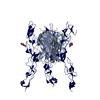
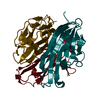
 Links
Links Assembly
Assembly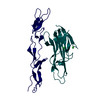
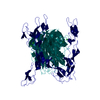
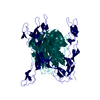
 Components
Components



 X-RAY DIFFRACTION / Number of used crystals: 1
X-RAY DIFFRACTION / Number of used crystals: 1  Sample preparation
Sample preparation SYNCHROTRON / Site:
SYNCHROTRON / Site:  ALS
ALS  / Beamline: 4.2.2 / Wavelength: 0.9951 Å
/ Beamline: 4.2.2 / Wavelength: 0.9951 Å Processing
Processing MOLECULAR REPLACEMENT
MOLECULAR REPLACEMENT Movie
Movie Controller
Controller



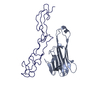
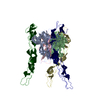
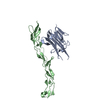
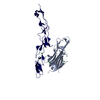
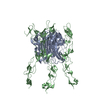
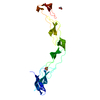

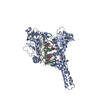
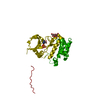
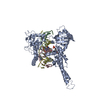

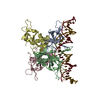
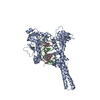

 PDBj
PDBj








